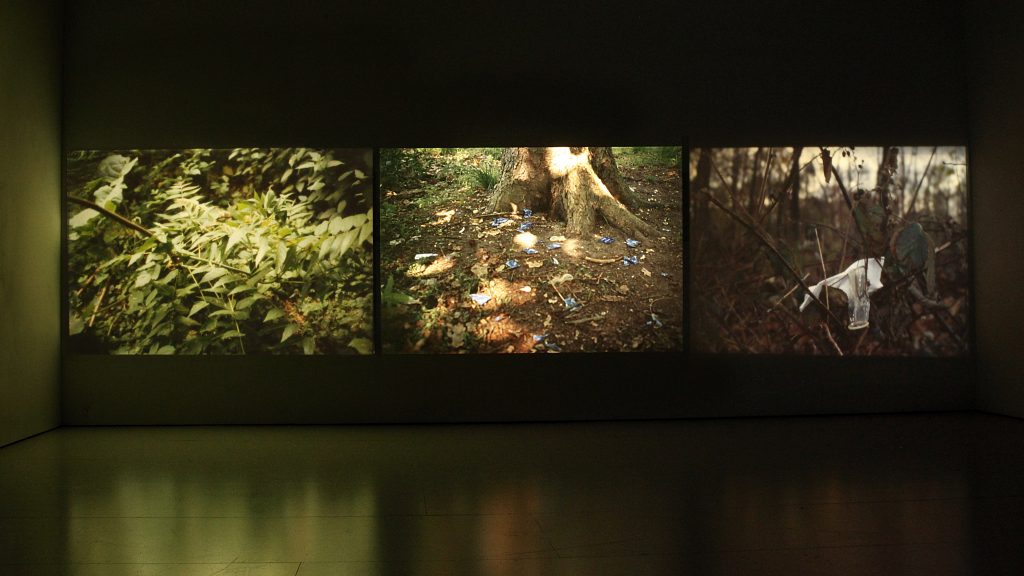2013_Slideshow, 1000 Ektachromes
2009-13 Boulogne woods near Paris.
The slideshow, Jogging Slides, made at Bois de Boulogne, between 2009 and 2013, is built around the passage of time and people. Photographs of litter, human traces and wealth shelters mingle with images of nature. Through the seasons, through a series of images, mainly showing used condoms on the ground, we perceive the evolution of an economy ghost. The amount of image produced in four years raises the question of the use of a daily and obsessive gesture as a method of documentary recording. The title refers to the repetition. Three images from the Jogging slides series were published in the issue of ART PRESS 2 / La Prostition, December 2014. Illustration of the interview between Catherine Robbe-Grillet, Thierry Schaffauser and Catherine Millet
“At the present time, only a few OECD countries include explicit estimates of illegal activities in their GDP figures although most of them have made experimental estimates for one or two years. Several transition countries, on the other hand, now make regular estimates of illegal activities. In general, the inclusion of illegal activities in GDP raises levels by less than 1%. The Statistical Office of the European Communities insists on a strict application of the EU version of the 1993 SNA, and this will eventually mean the inclusion by all Member States of illegal activities in their GDP. For prostitution, the standard approach is to estimate the total number of sex workers classified by gender and type of service provided. An estimate of the number of clients to each worker then provides the volume of output and multiplication by the average prices of each service gives an estimate of gross output. Intermediate consumption – rent, exotic clothing, electricity, etc. – is usually assumed to be some low, fixed percentage of gross output. The table below shows some recent estimates of illegal value added as a share of GDP. In 1996, therefore, prostitution represented 0.2% of the UK’s GDP.” “Source : Inventory of National Practices in Estimating Hidden and Informal Activities for National Accounts, Nations Unies,Genève, 2002. Derek Blades et David Roberts : Mesurer l’économie non observée, Mesurer les activités illégales, cahier statistiques OCDE, Janvier 2003.
